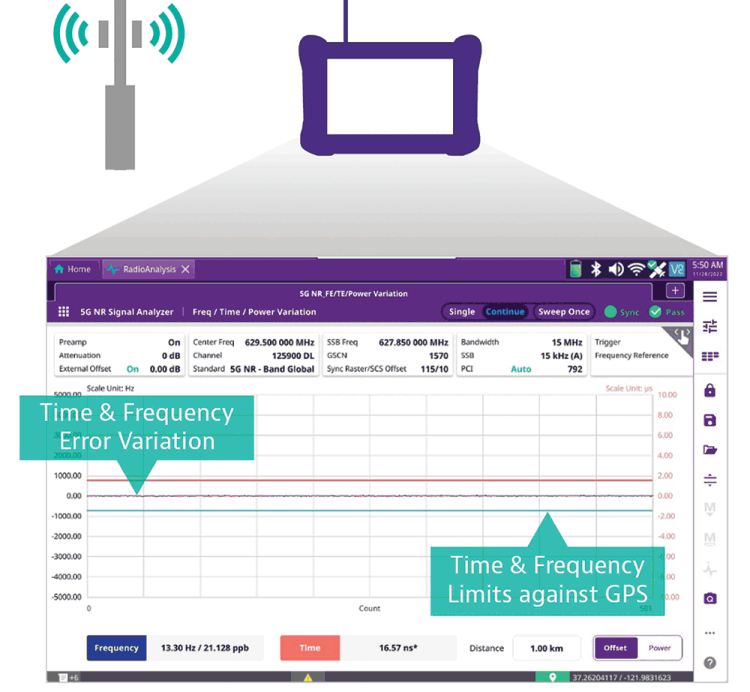
Interference can be defined simply as the presence of signals that impacts radio communications either in the downlink (DL) or the uplink (UL) path, producing network impairments. The interfering radio activity can have an internal origin when produced by the network itself, or an external origin when produced by other transmission systems nearby.
Cell phones are more prone to interference impairments since their transmission power (UL) is much lower than the base station one (DL). This means that any interfering signal in the uplink (UL), even if it transmits at a low power level, can cause retransmissions, or loss of capacity and service.
There are three main types of UL interference:
• Passive intermodulation (PIM) usually on the feedline, antenna or nearby.
• Interference in time division duplex signals (LTE and 5G) due to radio synchronisation and timing issues, especially for TDD networks like 5G.
• Interference from external sources, which are increasingly appearing in the radio access network.
Traditionally, a mobile service provider needed to use multiple devices to test for different types of interference, which was not only impractical, but also expensive. But RF interference hunting can be far easier with today’s technology. With a single, compact device, service providers can now address all three categories of interference. The OneAdvisor 800 Wireless is a complete solution that enables the consolidation of multiple test tools.
The OneAdvisor 800 can:
• Test for multiple types of interference with one device.
• Scale test capabilities as MOPs expand.
• Simplify interference testing.
PIM detection
The OneAdvisor 800 Wireless addresses multiple PIM challenges. It performs PIM detection via RFoCPRI on all frequency bands, non-intrusively, without a tower climb, and with minimal service impact, and by setting the radio to transmit at full power in test mode. If desired, the RRH power can be increased to trigger more PIM, making it easier to detect. Further, this ‘real’ PIM, seen in real-time, is often a result of many more sources than any single- or dual-port PIM tone generator can simulate.
Synchronisation and timing
OneAdvisor 800 Wireless is the first field device that can take over-the-air timing and sync measurements. The instrument can perform timing verification of 5G signals, including frequency and time variation of a cellsite against GPS, and cell phase synchronisation conformance test of a cluster of cell sites according to 3GPP standard with a clear PASS/FAIL indicator. The easy-to-use features of OneAdvisor 800 Wireless makes addressing the challenges of TDD timing and sync far less daunting.
External RF interference
The most effective methodology to detect interference in LTE-TDD radio access is with gated spectrum, which conducts spectrum measurements only in the transmission time of the uplink. The proprietary ‘TDD Automated Gated Sweep’ (TAGS) feature on the OneAdvisor 800 Wireless not only performs gated spectrum, but it also automatically identifies the uplink timeslot format for the user, which is itself a challenge.

InterferenceAdvisor is a fully automated RF interference hunting solution by VIAVI that removes the guesswork in finding external interference. Easy to set up and simple to use, it allows the identification and location of an interference source in just hours, simply by following voice prompts on a familiar
map-style application on an Android tablet. The InterferenceAdvisor software communicates with OneAdvisor 800 Wireless to retrieve RF power measurements (Peak, RSSI, Channel) and creates a power heat-map during a drive test. InterferenceAdvisor automatically detects the area of incidence with the highest presence of interference and then gives driving directions right to its location. Detecting and finding external interference that took days now takes hours with InterferenceAdvisor and OneAdvisor 800 Wireless.
| Tel: | +27 12 678 9200 |
| Email: | [email protected] |
| www: | www.concilium.co.za/test-measurement |
| Articles: | More information and articles about Concilium Technologies |

© Technews Publishing (Pty) Ltd | All Rights Reserved